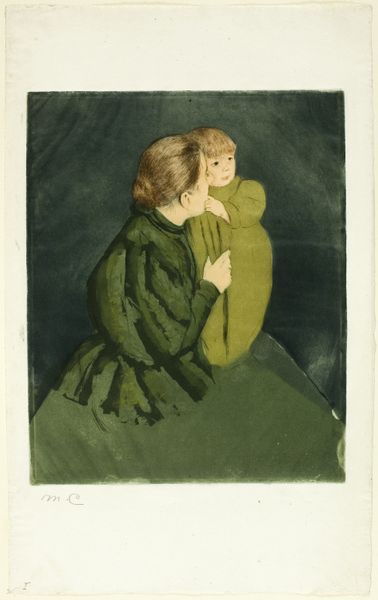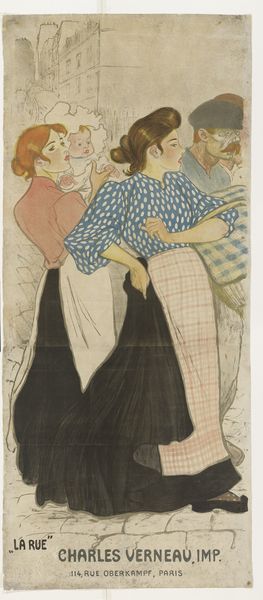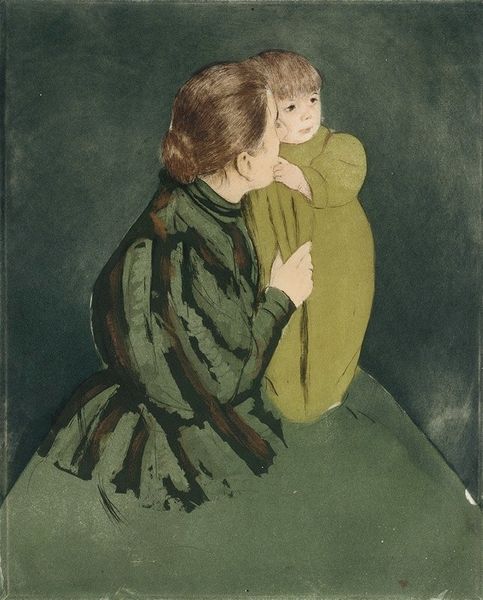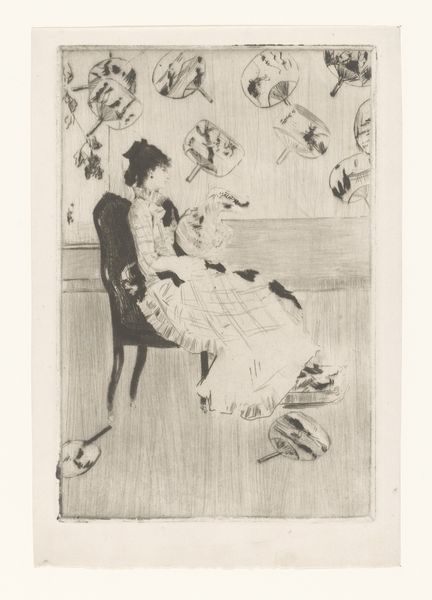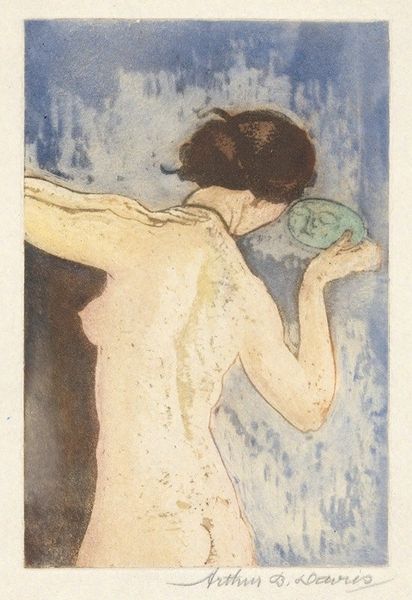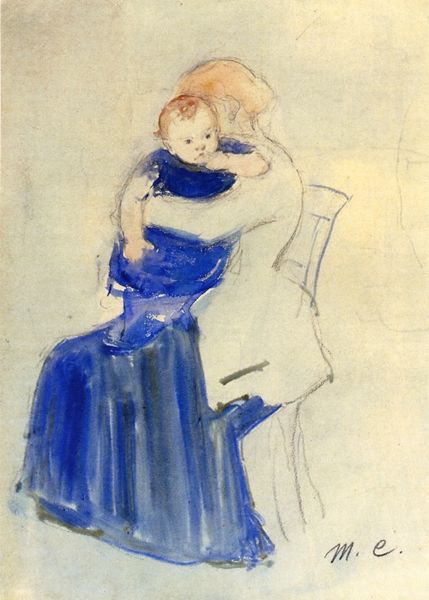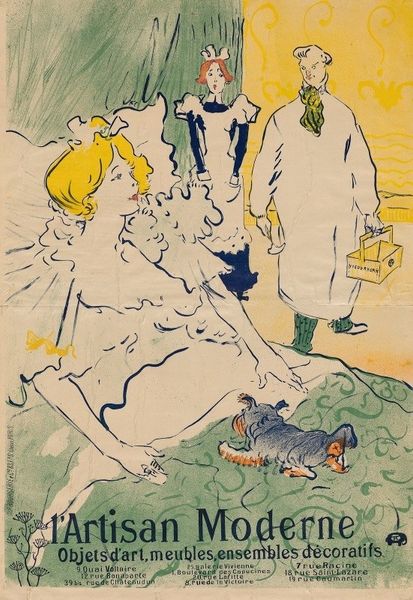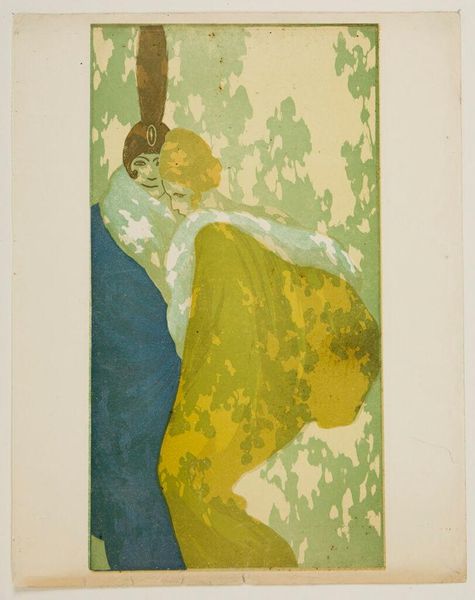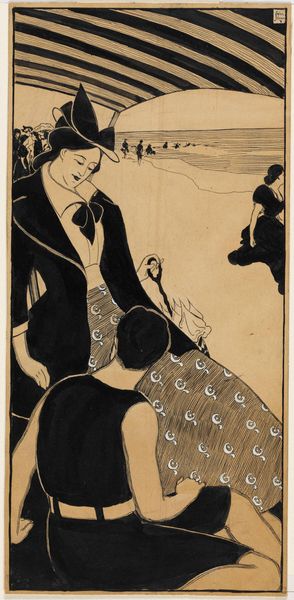
Copyright: Public Domain: Artvee
Curator: Looking at "Under the Horse Chestnut Tree," created around 1896-97 by Mary Cassatt, I'm struck by its simple yet impactful composition. Cassatt, of course, was a leading figure among the Impressionists, notable for her dedication to capturing the intimate moments of women's lives in the late 19th century. Editor: Yes, my immediate feeling is one of calm tenderness. The muted colors—the greens and blues—create a peaceful backdrop for the central figures. There's an almost sculptural quality in the way Cassatt renders the mother and child, even with the impressionistic use of watercolor. Curator: Absolutely. This piece, rendered as a color print with touches of watercolor, shows a mother holding her child aloft. Consider how innovative Cassatt’s approach was, adopting printmaking techniques and the compositional influences from Japanese prints, at a time when women artists were often relegated to more traditional genres and methods. Editor: That perspective also makes me think about the historical expectations of women, motherhood, and domesticity. Cassatt simultaneously acknowledges and subverts those expectations, showing this maternal bond not as an obligation, but as a source of profound emotional connection. It gives us a glimpse into the woman's interiority, almost defiant in its ordinariness. Curator: It’s essential to understand the cultural landscape in which Cassatt was operating, with her subjects often engaging in activities deemed appropriate for women. This piece is particularly poignant, it disrupts that expectation by portraying an obviously devoted bond without a trace of the sentimentality that was a hallmark of depictions of motherhood during the period. Editor: And you see that reflected, too, in the child's gaze – how he is reaching up to touch his mother’s face. This isn’t about saccharine ideals; it is about lived reality and a mutual gaze that embodies care. It’s also hard not to wonder if Cassatt, as a woman artist, was claiming space for the experiences of motherhood within the largely male-dominated Impressionist circle. Curator: What lingers with me is its commentary on societal norms. It’s this interplay between Cassatt's choices as an artist and the limited range of opportunities for women that makes her work continually relevant. Editor: Ultimately, “Under the Horse Chestnut Tree” resonates because it highlights a universal and deeply human bond that persists regardless of social constraint. Cassatt isn't just representing motherhood; she's celebrating the quiet resilience of women's experiences.
Comments
No comments
Be the first to comment and join the conversation on the ultimate creative platform.

